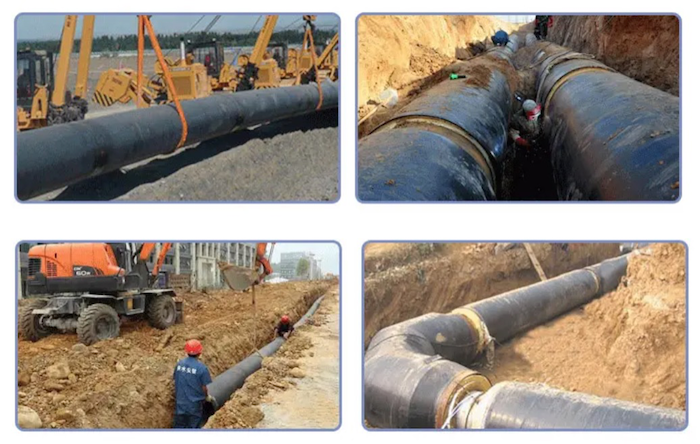Methane (CH4) is the main component of natural gas, biogas, pit gas, etc. It is widely distributed in nature, with 40% being emitted into the atmosphere through natural sources (e.g. wetlands) and about 60% from human activities such as animal husbandry, rice cultivation, fossil fuel utilization, landfills and biomass burning.
Methane is mainly used as fuels, such as natural gas and gas, and is widely used in residential and industrial applications.
Methane itself is non-toxic and is a type of organic compound used as a fuel and as a raw material for the production of hydrogen, carbon monoxide, and other substances.
The main component of natural gas is methane, which can be burned to release heat and is used in many homes for cooking.

However, the main components of methane are carbon and hydrogen. The combustion process may produce carbon monoxide, which is related to the adequacy of combustion. In high concentrations, methane can cause the oxygen content in the air to drop and can form toxic gases, mainly manifested as asphyxiation.
Usually most of the gas mains in old neighborhoods are corroded and cracked, and are prone to gas leakage, combustion, explosion... The situation.
However, sometimes the leaky pipe is located in a narrow or high place, so it is not convenient for the staff to detect it, so it is necessary to use the laser handheld methane telemetry to detect the pipe.
The ZW-G100 laser methane telemetry meter is mainly used to remotely measure the concentration of methane and methane-containing gases (natural gas or similar).

It works by pointing a laser beam at a detection point to quickly measure methane gas concentrations from 0.5 m to 50 m distance. The concentration of methane gas masses distributed in the path between the device and the target point is measured by firing a laser at the target point (gas pipe, ceiling, wall, floor, ground, etc.) and then detecting the laser signal reflected back from the target point.
More use scenarios
1.Detection of overhead pipes and trenches
Using laser methane telemetry to detect overhead pipelines, scanning overhead pipelines (within 35m) one by one, and using mobile telemetry methane laser detector to scan distant locations in special locations not easily reached by personnel inspection, scanning the indicating laser from the instrument to the location where leakage may occur, and then judging the leakage status by screen display. Through focused monitoring of the two pipeline locations and daily equipment testing and pressure holding tests, no leaks were found, consistent with the results of the traditional detector. Therefore, it was concluded that the laser methane telemetry equipment can be operated from a distance to provide great convenience for production safety personnel to conduct inspections.

2. Detection of buried pipelines
When the abnormal pressure of pipeline natural gas caused gas leakage, the laser methane telemetry instrument was used to monitor the situation, and the instrument was found to sound an alarm at the excavation site of road construction. After careful inspection and gradual approach to locate the location, it was determined that there was a leak in the pipeline at that location. It was understood that the pipeline leak at this location was caused by the road construction using excavators for residual soil cleanup, which inadvertently damaged the company's pipeline when it was cleared above the gas pipeline, resulting in a gas leak.
In the buried pipeline leak repair, it is not easy to detect the leak point because of the rapid diffusion of the leaking gas into the air, and the laser methane telemetry can detect methane gas in the air as faint as 2ppm because of the ppm level (parts per million) accuracy, and scan the surrounding gas concentration through the screen display so as to locate the leak point accurately.

3. Detection of inaccessible pipelines and indoor pipelines in the community
Laser methane telemetry makes it easier to detect gas pipelines that were previously inaccessible using traditional detectors, eliminating dead spots and making detection results more accurate while being convenient. In the non-household inspection, the laser methane telemetry is used to detect the gas pipeline through the glass window outdoors one by one.

4. Monitoring natural gas leaks in valve chambers and compressor plants In the long-distance natural gas transmission process, pipeline valve chambers and compressor booster stations are important facilities for natural gas transmission, and their leak monitoring is also a key monitoring place for the production security department, and now laser methane telemetry is gradually being applied in these important parts.
Conclusion:The laser methane telemetry instrument has the advantages of high detection accuracy (ppm level), fast response (0.01s), telemetry (50m), and convenience, speed and accuracy in gas leak monitoring. It solves the problem of gas leak detection in pipeline network facilities, which cannot be achieved by traditional instruments. Field application of laser methane telemetry can greatly improve the efficiency of gas leak inspection. Through the testing of several different application scenarios, it shows the advantages of using laser methane telemetry in solving gas leakage safety prevention problems, which lays a solid foundation for ensuring optimal operation and is an effective supplement to existing detection instruments.










